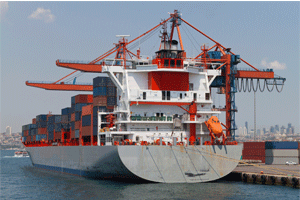
Retailers Matching Supply and Demand of Holiday Merchandise
December’s import cargo volume at major container ports will be the same as 2014 as stores bring in the last round of holiday merchandise, the NRF said.

December’s import cargo volume at major container ports will be the same as 2014 as stores bring in the last round of holiday merchandise, the NRF said.

Import cargo volume at the nation’s major retail container ports is expected to increase 8.3% this month over the same time last year as consumers begin their holiday shopping. That’s a dramatic difference from this time last year, the National Retail Federation says.

NRF is forecasting online sales to increase between 6% and 8% to as much as $105 billion. See what other projections NRF made for the holidays.

A new report found that delivery and warehouse capacity issues continue to impact supply chain costs, with retail being one of the hardest hit sectors.

A proposed bill would let governors invoke the Taft-Hartley Act to address port slowdowns like the one that caused massive gridlock at 29 West Coast ports.

Barring a major breakthrough, a crippling West Coast port shutdown could happen in 5-10 days, costing the economy $2 billion per day, according to the NRF.

As the 2014 retail seasonal shipping peak roars to a close, the major carriers are seeing their numerous upgrades and investments put to the test.

A majority of smartphone users (55.7%) said they will use their device in some fashion this holiday season, up from 53.8% last year.

July port traffic is projected to be at the highest level in five years, the NRF reports, as west coast port negotiations go on.

A joint NRF/NAM study found a West Coast port strike could cost the U.S. economy up to $2.5 billion per day.